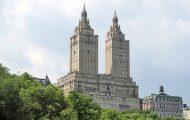Extell filed a lawsuit on Christmas Eve against the non-profit City Club of New York for “secretively” continuing legal action against their contentious Upper West Side skyscraper located at 50 West 66th Street.
The 775 foot tall tower, designed by architecture firm Snøhetta, will be the tallest skyscraper in the Upper West Side if and when it is built to completion. However, it has seen a barrage of legal challenges from City Council member Helen Rosenthal, along with preservationists such as Landmark West! and locals since it was announced in 2017. Construction of the development began during the summer of 2018.
After the city temporarily pulled permits for the project in January, unless safety and zoning adjustments were made, Extell Development submitted new plans which were approved by the Department of Building and the FDNY. At this time, City Club filed a suit stating the tower violates the city zoning laws and attempting to further block construction.
Advertisement
Now Extell is suing City Club for continuing to pursue legal action against the development, saying that the organization “orally” agreed to drop its suit against Exell in return for a $300,000 settlement in September, although this agreement remains unsigned. Extell released a statement which said “The City Club’s decision to secretively try and gain more information about how its appeal might be received, and then subsequent decision to renege on the agreement it had reached, is improper.”
City Club’s lawyer, Richard Emery, said in a counter-statement, “No one agreed at any point on behalf of the City Club that the dispute was settled.” City Club’s former lawyer, John Low-Beer, stated “It’s a SLAPP [strategic lawsuit against public participation] suit. We didn’t have an agreement and the board decided not to settle. There were discussions but they never were concluded.”
The focus of the controversy are the mechanical voids built into the building’s design which contribute to its exceptional height. These mechanical voids are a loophole which allow building developers to boost height via unused “voids” built periodically along the building’s height, which aren’t counted in the total height versus maximum allowed height calculation of a building. The City Planning Commission voted 12 to 1 this year to amend the law allowing for these voids after a slew of super-tall developments in midtown and around Manhattan in recent years.



